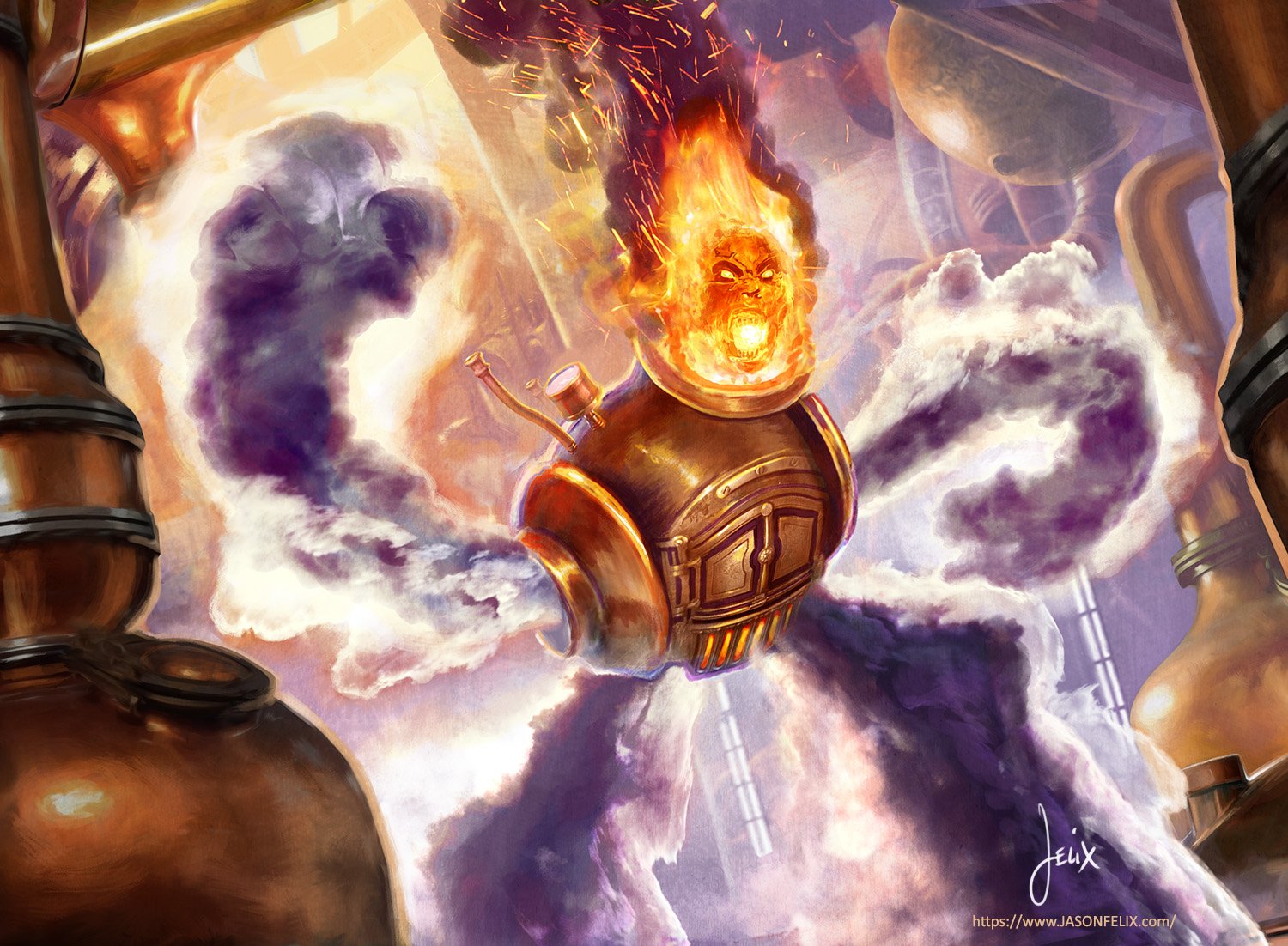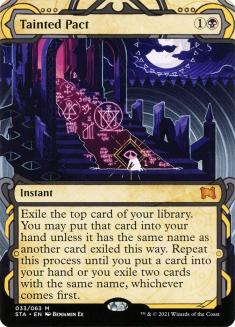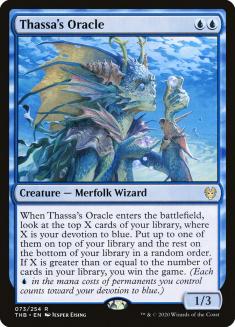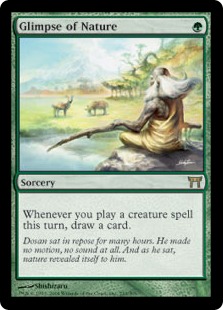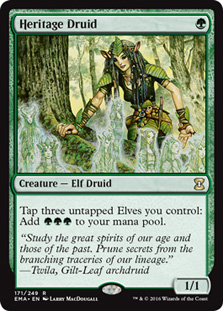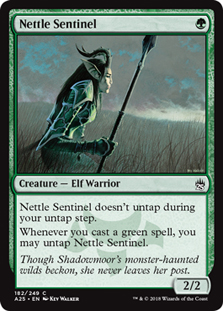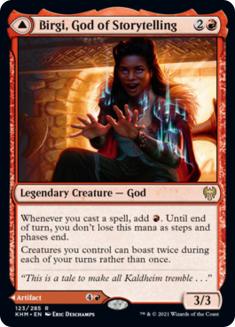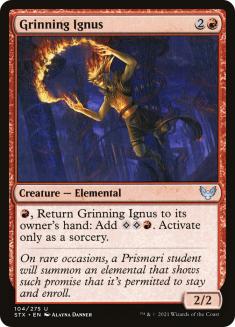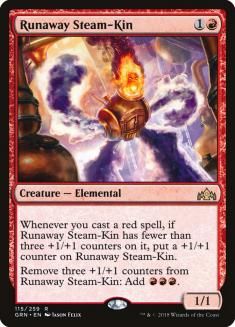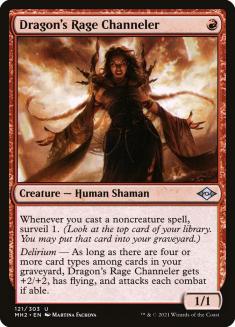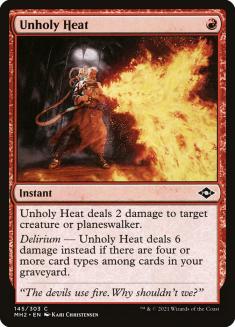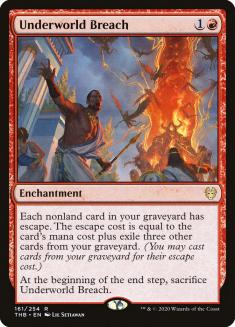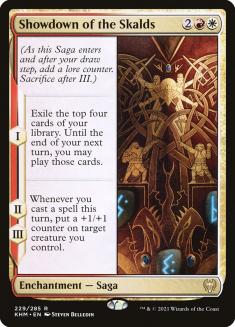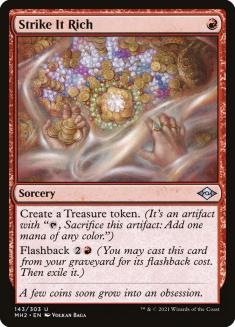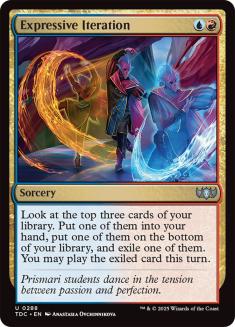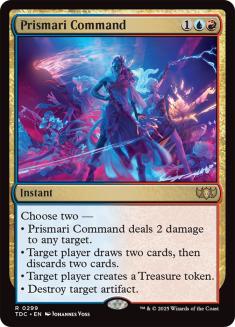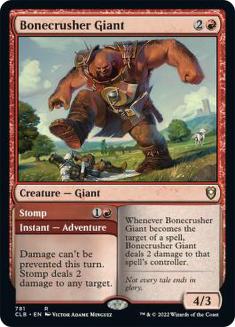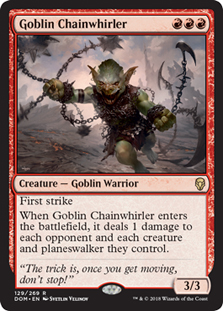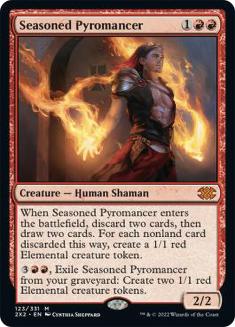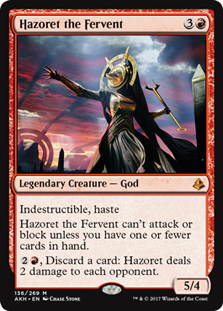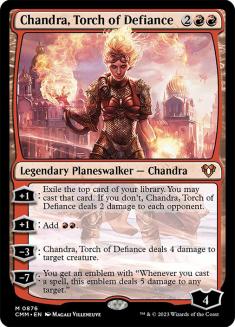When the Jumpstart: Historic Horizons set list dropped into our laps, I had more fun coming up with deck ideas than I’ve had in a long time. Historic’s lack of continuity and definition is a serious problem in some ways but a blessing in others, giving you a chance to work your creative muscle. My initial brainstorming, as chronicled in my article from a few weeks ago, featured a wacky Grinning Ignus combo deck that exemplifies everything I love about Magic.
A sad truth of deckbuilding and content creation is that most experiments fail. For every batch of decks we brew up for a new set, only a handful will pass the initial smell test and fewer still merit real consideration. You also have to keep your own biases in check. I love decks like this that are too clever for their own good but am always sure to make that clear before I endorse them to others. With the Arena economy making it cost-prohibitive to try out anything new, I expected this deck to be a fun idea and nothing more.
Thankfully, proud paper boomer Ross Merriam was able to put the deck through its paces on VS Live! and gave it rave reviews. Although Corey’s Tempered Steel list was easy prey for a fast combo deck, the shell seemed functional and powerful enough to take on more disruptive opponents.
Most successful combo decks in recent years have followed a classic template: take a card or set of cards that work well together and exploit those as fully and consistently as possible. Depending on their deckbuilding requirements you may get to splice the combo into some other shell, but it’s clear what the objective is. Deck naming conventions are often tricky but they tend to be simple and informative here. You might not be able to guess the dozens of one-ofs that fill out a Dimir Tainted Pact list but you know Tainted Pact is at the center of it all.
A rare breed of combo decks falls under the label of ‘engine’ combo. You have a web of cards that generate or exchange resources and you have more agency over how you use those to do something useful. These strategies only occur when the stars align perfectly but can be truly scary when they do, being less reliant on individual cards than a typical combo deck and more flexible across the board.
The hot mess I bestowed upon Ross aims to be in this camp, as shown by the difficulty in defining it. Is it a Grinning Ignus deck? Maybe not for much longer. Is it an Underworld Breach deck? There are only a few copies of Underworld Breach and they are often the first cards to hit the bench in sideboarding. It is a Dragon’s Rage Channeler + Unholy Heat deck? What isn’t these days? ‘Boros Game Actions’ is technically accurate but may leave the reader even more confused.
To cut through this fog let’s start with the combo — or rather a combo — that informed the rest of the deck:
Grinning Ignus offers an unusual form of resource conversion, letting you spend mana to increase your spell count. One copy of a creature like Birgi, God of Storytelling or Runaway Steam-Kin that gives you mana for casting a spell makes this mana-neutral, letting you repeat this as often as you like for a lethal Grapeshot or as many Showdown of the Skalds triggers as you need. With two creatures (either two Steam-Kins or a Steam-Kin and a Birgi) this loop generates infinite red mana that you can convert into lethal damage with Den of the Bugbear (as each activation adds another “Whenever this creature attacks…” trigger), pour into Shatterskull Smashing, or use to ignore mana constraints when going off with Underworld Breach.
This package has been legal in Historic since Strixhaven but was immediately overshadowed by the Mystical Archive cards that joined the format at the same time. Keeping Steam-Kin or Birgi alive is tough, especially when everyone else is just as keen to play Unholy Heat, and a three-card combo is inherently difficult to build around in a cohesive way. I figured the combo was worth a look because the many new additions from Jumpstart: Historic Horizons let the deck play a fine ‘fair’ game but the next step may be seeing what else can be done with this shell without these conditional combo pieces. Recognizing when the initial idea that spawned a deck is now the thing holding it back is a crucial skill that may be tested here.
It’s clear that Dragon’s Rage Channeler and Unholy Heat are game-changers in Historic but their full impact won’t be clear for some time. I worry that they will homogenize the format to a degree; Izzet Phoenix no longer has to make tough choices over which backup threats to play as Channeler is clearly the best option, and it now has more overlap with Rakdos Arcanist whose incentives have changed in the same way. Unholy Heat raises the bar so high for any creature or planeswalker that many beloved cards in Historic can’t hope to meet it.
On the other hand, these cards open up space for decks like this that want to cast as many spells as possible but struggle to do that quickly or efficiently. This isn’t the best Dragon’s Rage Channeler deck by most metrics — it can’t achieve delirium trivially like Izzet Phoenix or use it in hyper-aggressive starts like the Mono-Red Hollow One decks — but Channeler serves several unique roles here. It’s the ideal repository for +1/+1 counters from Showdown of the Skalds, becoming a two-turn clock remarkably easily while rewarding you for each spell, but it’s also a combo piece with one of the most powerful cards in Historic.
Underworld Breach is a ridiculous card with any reasonable supporting cast and didn’t take long to be banned in multiple formats. Historic has a lot of things but it doesn’t have the easy Lion’s Eye Diamond loops (yet…) or other fast mana that break the card wide open elsewhere — it needs some setup.
Your cheap enablers shuffle resources around in a way that’s exploitable when you can cast them repeatedly with Underworld Breach and Channeler makes this possible. Strike It Rich is mana-neutral by itself so adding Steam-Kin or Birgi lets you net mana and thereby convert spare cards in the graveyard into extra mana by flashing back Strike It Rich. Channeler gets you those spare cards. Faithless Looting spends one mana to add two cards to the graveyard; a Steam-Kin or Birgi makes this mana-neutral and adding Channeler to surveil every loop makes this card-neutral too, letting you loot endlessly in search of a missing piece.
These sequences involve a lot of moving parts but Channeler gives you the card selection and escape fuel that makes them realistic. As you aggressively surveil through your deck you’re likely to find a second Channeler, which in turn makes it trivial to find the third Channeler or some spell to keep recasting (Unholy Heat to wipe their battlefield, for example). You don’t need to assemble some deterministic combo for Breach to be good — recasting several card draw or removal spells and getting additional benefits for each is enough to win most games.
This all sounds great, so why are we not leaning even harder on Underworld Breach? It turns out that players can and will load up on graveyard hate — including in maindecks — as a response to Channeler taking over Historic and you can’t afford to be too weak to that. Redundant copies of Breach are usually dead and the first copy doesn’t do anything before your big turn. Being able to sideboard away from Breach and other graveyard-focused cards is an important tactic for beating the hate that you know is coming.
Showdown of the Skalds is a centerpiece of this deck and justifies the white splash by itself. It finds both your combo pieces and your spells to enable them as well as rewarding you for casting them all while being your best tool for any longer, grindy game. The deck’s curve has to be low for everything else to work so you’re rarely stranded with uncastable spells other than another Showdown, which is a great hit anyway if you have time.
Showdown also poses tough tactical questions. Do you cast it as soon as possible and risk losing land drops or flipping spells you can’t/shouldn’t cast? Do you wait and risk not finding a good opportunity to cast Showdown or the revealed cards? Whether or not you have a creature yet to load the Chapter II/III counters onto, you have to consider whether you should cast cheap spells now if you could get that additional value from them with Showdown on the following turn. Planning for the ‘Showdown turn’ with the known and unknown information that entails is the most difficult part of piloting this deck.
Strike It Rich is subtly important here as a way to set up Turn 3 Showdown into a big Turn 4 but also as a ‘free’ spell during that one-turn window that then gets to stay in the graveyard. If you branch out into a third colour, Treasure tokens offer valuable fixing for a deck that wants to devote many land slots to modal DFCs that also inflate your spell count.
The blue splash for some usual suspects is very appealing. Expressive Iteration wasted no time in establishing itself as one of the best cards in any format it’s legal in and this is a better home for Iteration than Izzet Phoenix or the Jeskai Control decks that have adopted it despite its tension with their reactive cards. You have a lot of card selection but no raw card advantage other than Showdown of the Skalds and Iteration is the best way to remedy that. This deck cares about card quality as a combo deck does but card quantity matters when your primary and secondary plans both involve casting as many spells as possible.
In that vein, Sprite Dragon is the best backup threat you could ask for — it gets out of control quickly and doesn’t care about the graveyard. You can cast a Sprite Dragon during a combo turn and have it balloon into a lethal threat as you keep casting spells, removing the need for more narrow win conditions. In sideboard games where you want additional threats to play a ‘fair’ game, Sprite Dragon’s aggression is crucial.
Prismari Command is a highly versatile card but one that has only broken through in other hybrid combo decks like Indomitable Creativity where it can further your main plan. Here, Prismari Command can swat away nuisances like Soul-Guide Lantern or Grafdigger’s Cage while digging for combo cards or removing something else too but its main appeal is as a wildcard for your Underworld Breach loops — the Faithless Looting mode can substitute for Looting itself while the Treasure mode helps Command pay for itself. It’s easy to work Command into these sequences while using its other modes to clear the opposing battlefield.
There’s no shortage of strong red threats that let you play a more ‘normal’ sideboard game. Seasoned Pyromancer is the least impactful but pairs most naturally with the rest of your deck; at the other end of the spectrum, Hazoret the Fervent hits hardest but demands tough sacrifices and awkward sequencing. Chandra, Torch of Defiance is a standout here as a noncreature spell (important for Sprite Dragon and Dragon’s Rage Channeler, which is glad to see another unique card type) that acts as both removal and card advantage and is an ideal card to ramp into with Strike It Rich.
I think this move away from Grinning Ignus makes sense and the blue cards are appealing enough that I would start here:
Creatures (14)
Lands (18)
Spells (28)

Historic will surely settle once there are reasons to take it seriously again, but for now it’s the perfect place to indulge your strangest deckbuilding desires.

